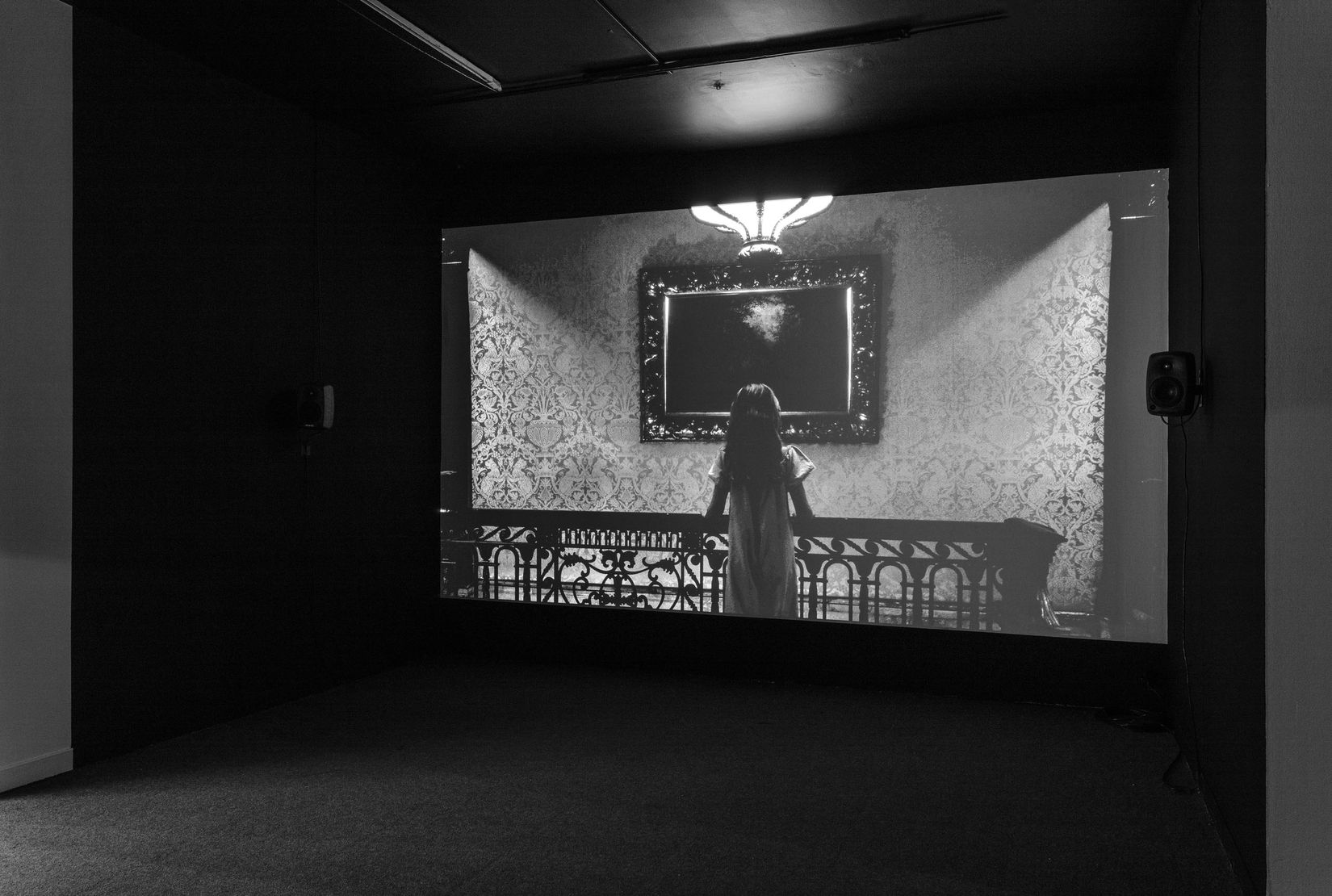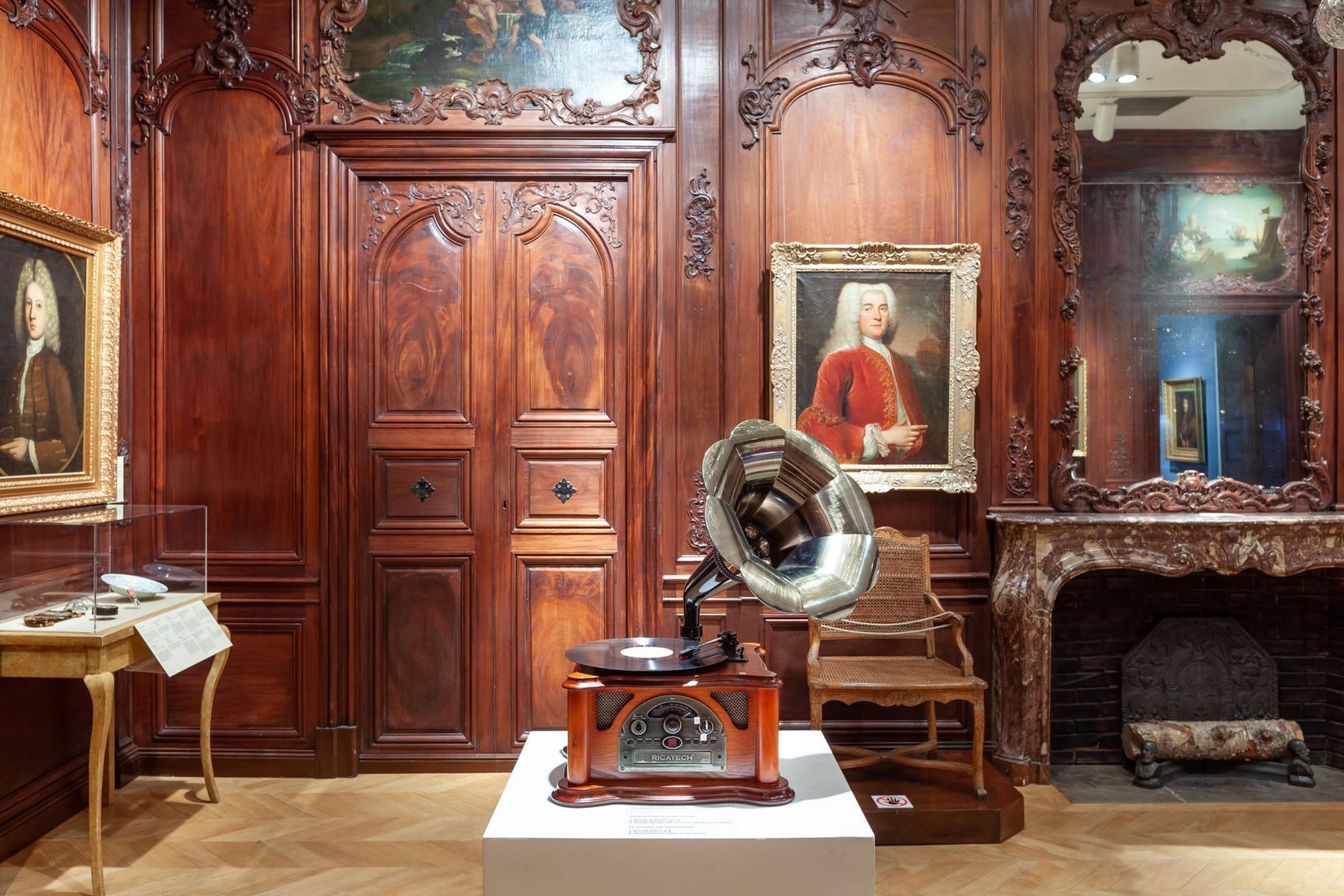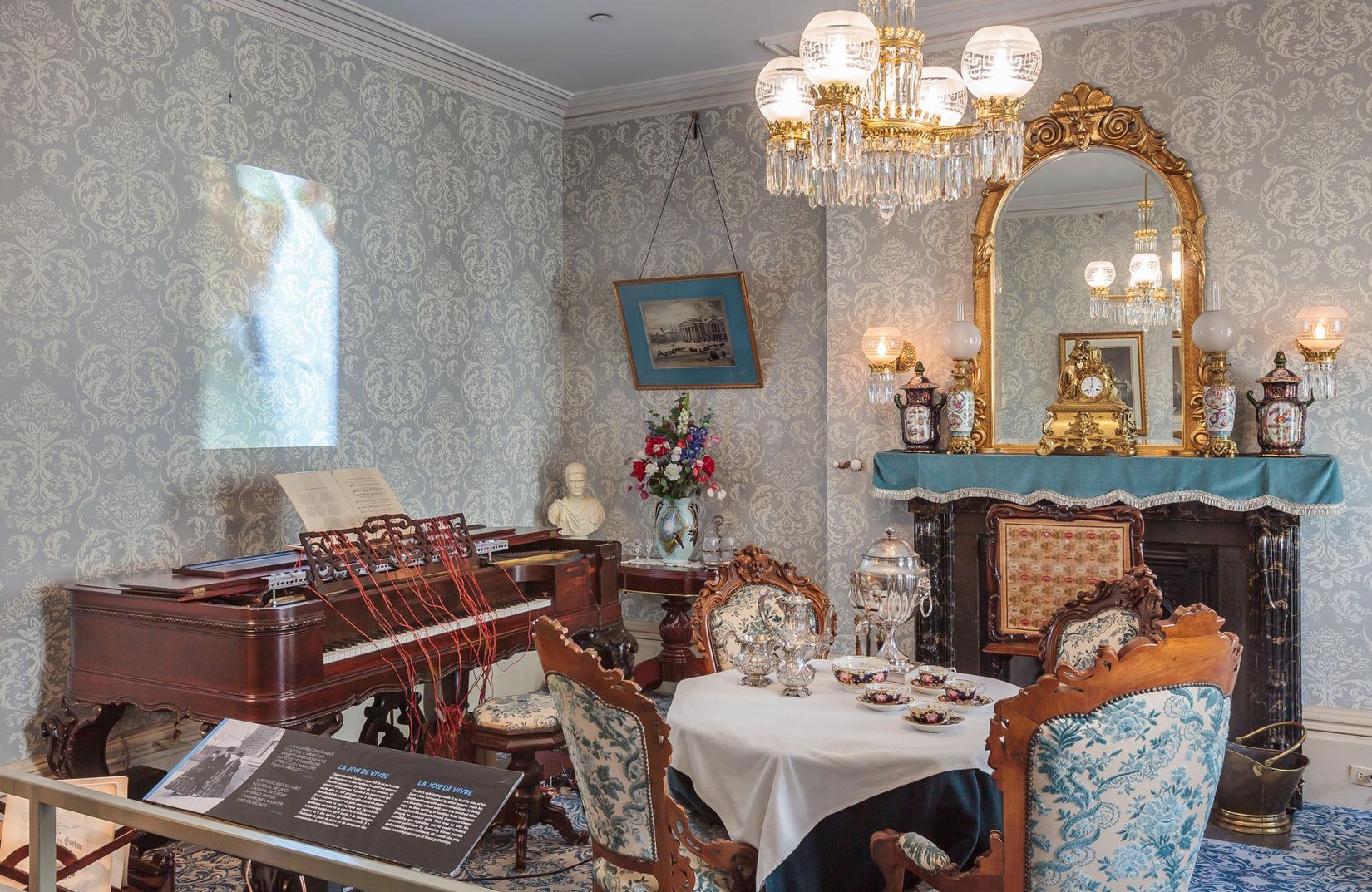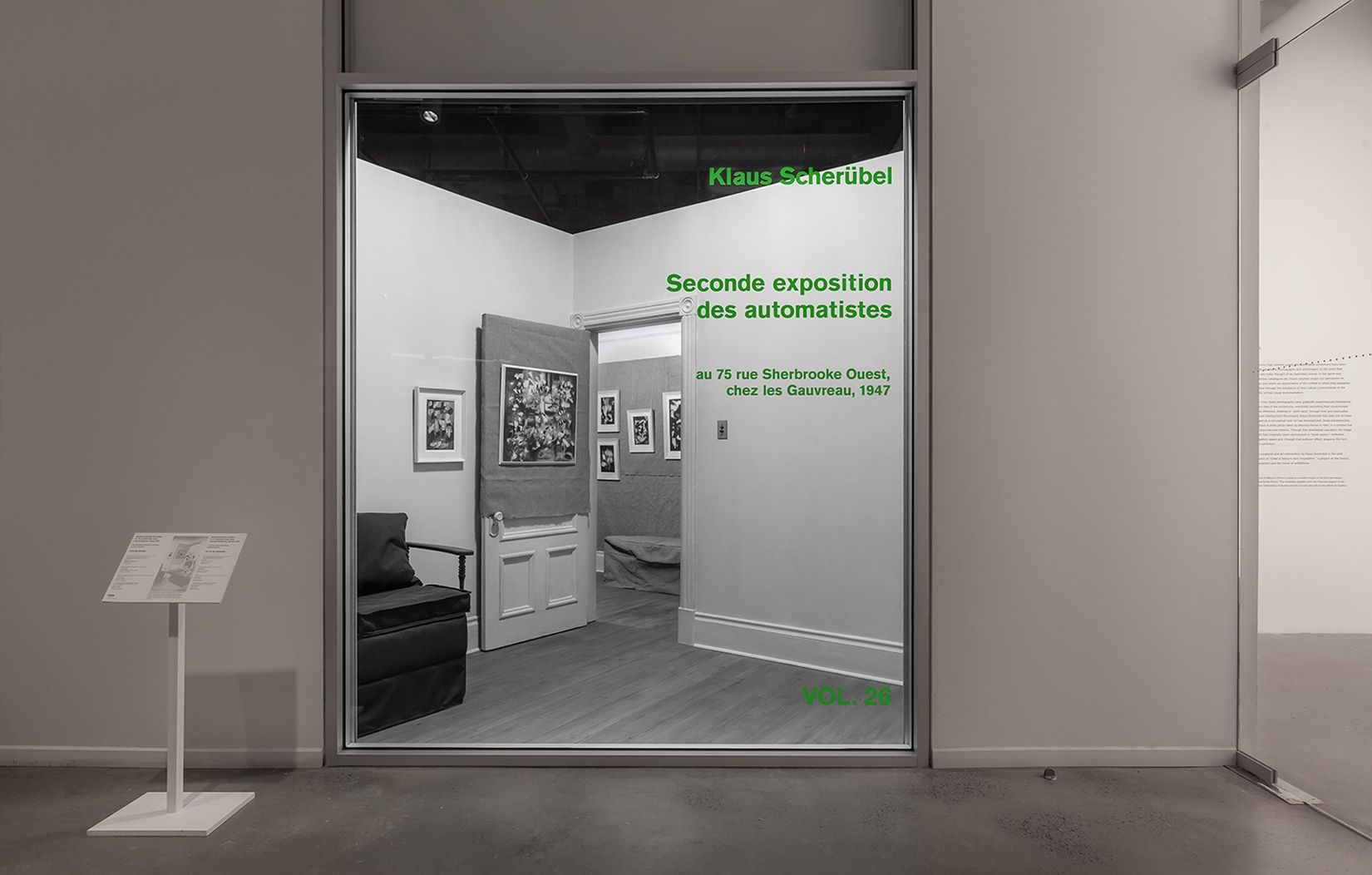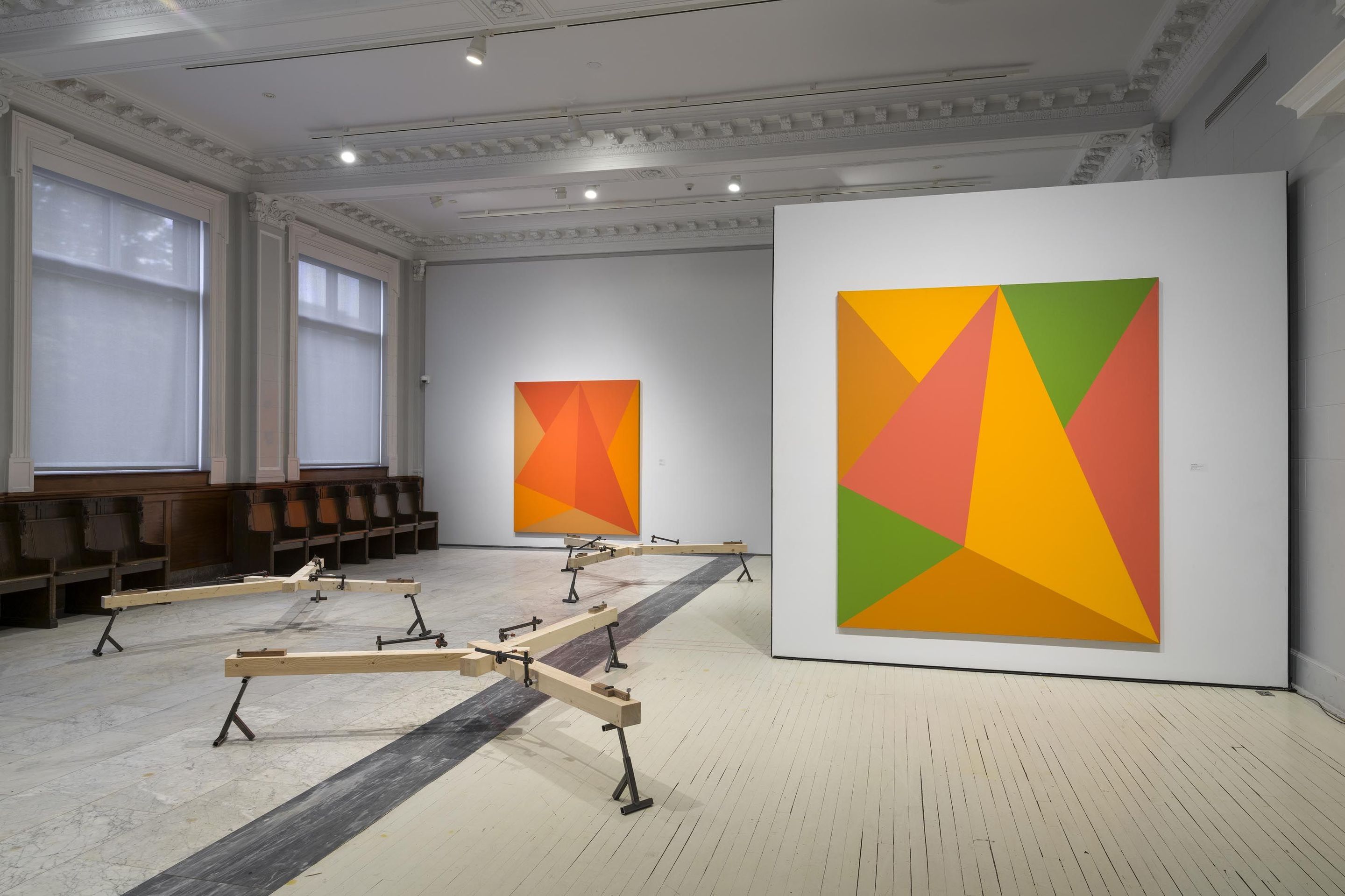
Period rooms
Thomas Bégin
Guido Molinari Foundation
2019.06.14 - 08.11
Thomas Bégin‘s site-specific intervention takes Guido Molinari’s workspace—his studio, partly converted into a museum and open to the public—as its starting point, and it spills over to all of the Guido Molinari Foundation exhibition spaces. Employing the device of the period room, this studio-under-glass reveals the traces, in multiple layers, of the visual artist’s work over a twenty-year span. Bégin’s intent is to deploy these multiple temporal strata, conceiving of the studio as a production “machine” in which ideas, experimentations and serial works succeeded each other. Starting from this “period mental room,” Bégin has devised various sound sculptures, visually abstract and musically concrete, that evince a rapprochement with Molinari’s conceptual and chromatic research, entering into unexpected dialogue with them. This exhibition follows from research conducted by the artist during a spring 2019 residency at the Foundation.
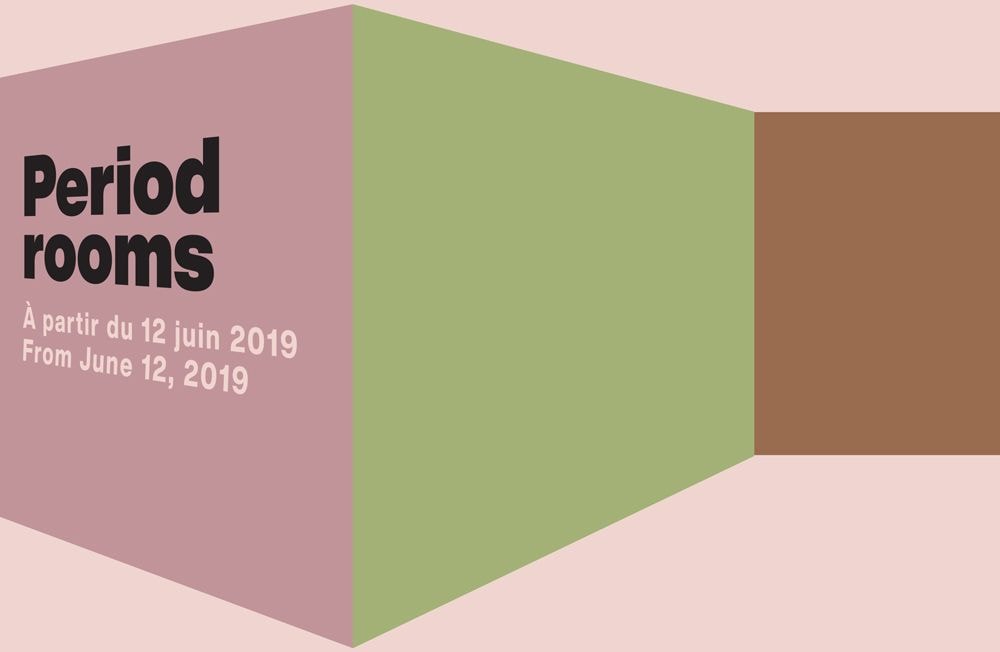
The period room offers a fascinating experience of space and time: it locates visitors in an interior reconstituting a past that seems remote, and frozen for eternity. This dizzying anachronistic effect is accentuated when such rooms are reconfigured from the point of view of the present day, through artists’ interventions. The latter can elicit new narratives, whether historical or fictional, or foster associations with a time that is long gone. In so doing, each intervention creates a temporary opening into the past represented by the period room in question, encouraging visitors to engage in new and unfamiliar experiences there.
Curated by Marie J. Jean, this event presents experimentations by seven contemporary artists—Steve Bates, Thomas Bégin, Pierre Dorion, Frédérick Gravel, Jacqueline Hoàng Nguyễn, Jocelyn Robert, and Claire Savoie—in the period interiors of the Château Dufresne, the Château Ramezay, Saint Joseph’s Oratory of Mount Royal, the Sir George-Étienne Cartier residence, and the Guido Molinari Foundation. Concurrently, at VOX, centre de l’image contemporaine, Klaus Scherübel has produced an art intervention that employs the period room format to reconstitute two exhibitions organized in 1947 by the Automatist artists.
This is one of the 200 exceptional projects funded through the Canada Council for the Arts’ New Chapter program. With this $35M investment, the Council supports the creation and sharing of the arts in communities across Canada. This event was also made possible with financial support under the Agreement on the Cultural Development of Montréal between the City of Montréal and Québec government.

